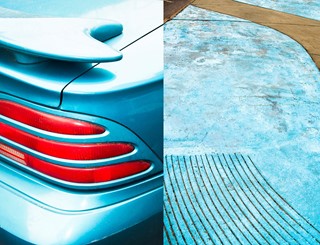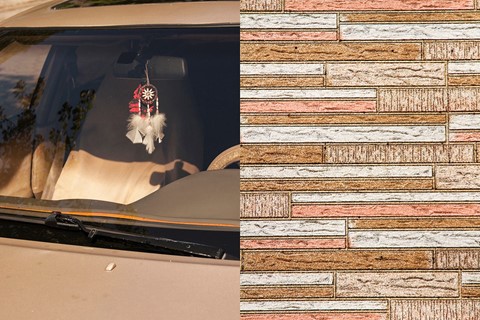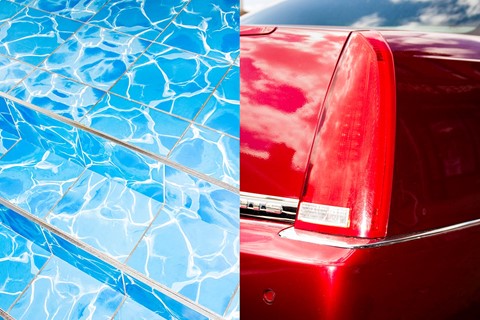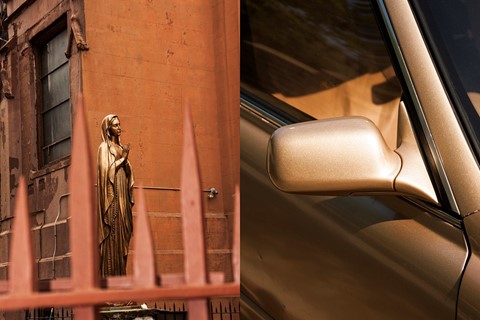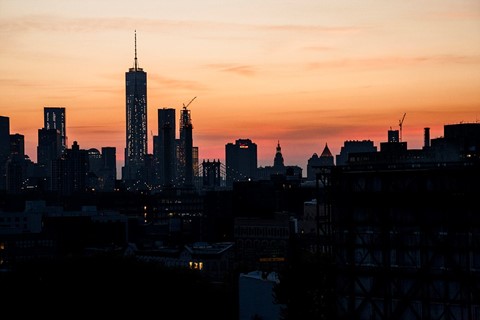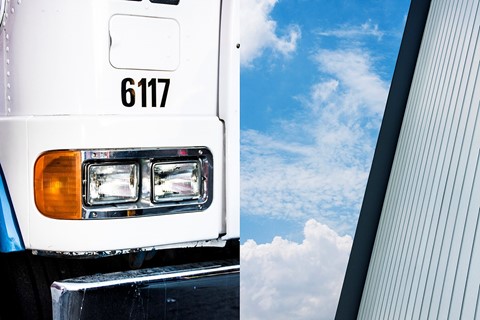We speak to photographer Felipe Barbosa about delving into America's car obsession
When Brazilian photographer Felipe Barbosa travelled to New York for his new project, Cars, he didn't just go as obsessive car enthusiast, but as an artist, intent on capturing his subjects in their homeland: 21st century, Obama’s America. The result is a cut-up, collage-like vision of American iconography, where bright bonnets sparkle, brown leather wrinkles, steel bumpers rust and stars and stripes fade in the East Coast sunshine.
Cars have long captured the American imagination. On May 23, 1934 Bonnie Parker and Clyde Barrow’s stolen V8 Ford was halted at a police roadblock in Louisiana and the couple inside were killed by a shower of bullets. The car – battered, pockmarked and perched atop a trailer – later toured the United States so popularly that a number of fakes started to appear at county fairs and carnivals across the country. In 1961, an illustration of a yuppie couple speeding along in their car graced the pages of comic book Girls’ Romances and was spotted by pop artist Roy Lichtenstein. His painted adaptation of the image, In the Car, sold at auction in 2005 for a record $16.2m.
Indeed, since the Model T, the American automobile has inspired artists, photographers, filmmakers and writers alike. From Neal Cassady’s ’49 Hudson and the Dukes of Hazzard’s ’69 Dodge Charfer to Starsky and Hutch’s Gran Torino and Danny Zuko’s Grease Lightning, it is clear that the United States is not only a land of liberty and independence but also of devout automobile aficionados. Here, we catch up with Barbosa about his own longstanding love of cars, New York city and the pleasures of still life photography.
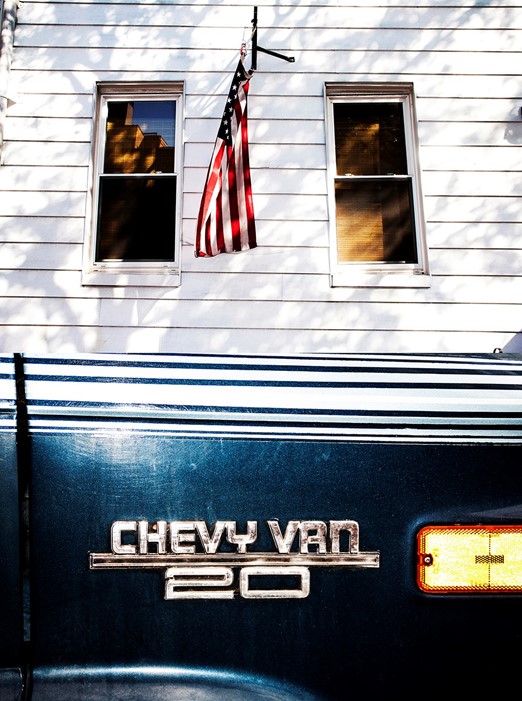
On photographing cars...
My brother and I have been fascinated by cars since we were young. We used to check off the cars we liked on the streets and afterwards, tell our mother the models we saw during the day. I had already done a project of cars and buses, but for this project I thought it would be interesting to push it a bit further soI decided to match the cars with other iconic elements of American culture. I was inspired by past car projects by other photographers like Andrew Bush, who made a really nice book called Drive, and Alexander Babic, with his book Roadshow of truck drivers and Dekotora (Japanese decorated trucks).
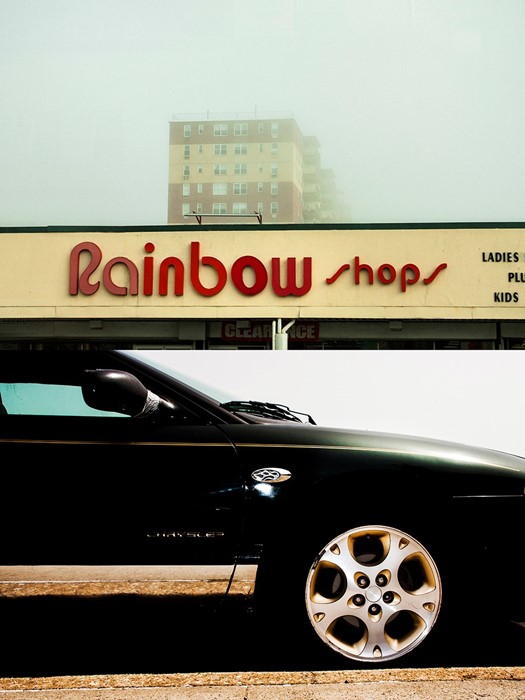
On annoying his friends...
I decided to do this project while visiting some friends in New York. It was quite funny because I kept wanting to take photos of car windows but my friends didn't have much patience with me and they kept walking away. My wife is used to it by now – she continues to walk along the street and then I have to run to join her!
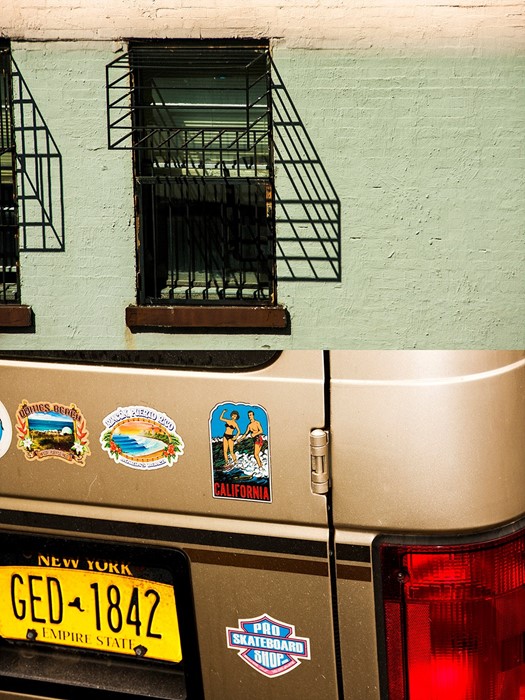
On using the iconography of the American street...
I used what was accessible for me at that time – since I was in Brooklyn, I used the elements that I thought were most coherent in that environment. My point of view was kind of instinctive. I framed the photos in a way that put the cars first; I thought that if I opened my angle more, it could lose the thematic power. But I also tried to capture the link between the city and the cars, exploring the similarity between the two. My photographs conjure up a foreign point of view in a familiar environment.
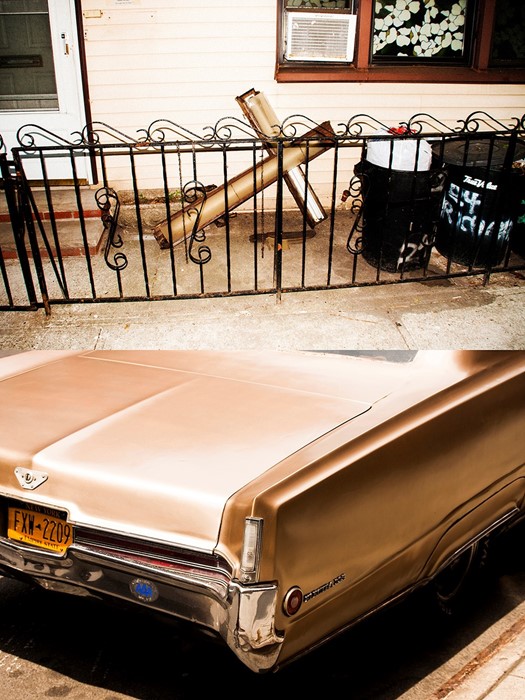
On the difference between shooting fashion models and objects...
When I shoot someone, I can have a tripod and use the same lighting, but the clicks will never be the same. It changes, because the person is always changing with you. Still life is entirely about your point of view as a photographer because it is something that doesn’t interact with you in a direct way; it is kind of contradictory. When I found the car I liked, for example, I took my time try to find the best angles until I was satisfied. Sometimes I'd spend ten minutes or more next to a car, to discover the parts that I liked most.
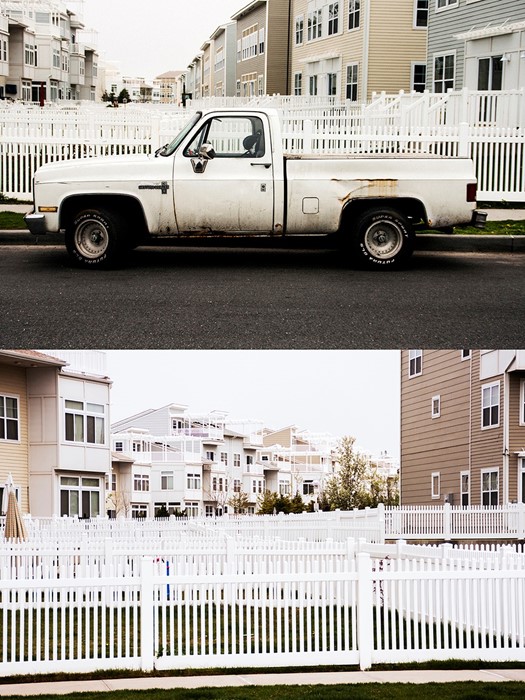
On his love of photography...
My interest in photography started during college in Brazil. I was about 17-years-old and, at the time, I was studying art direction but I dropped it to start working with my photography teacher. I was attracted by the fact that photography allowed me to express myself and my vision in a very direct and simple way, and this project is no different. I've never worked with any other medium besides photos – instead of talking, I use images.
